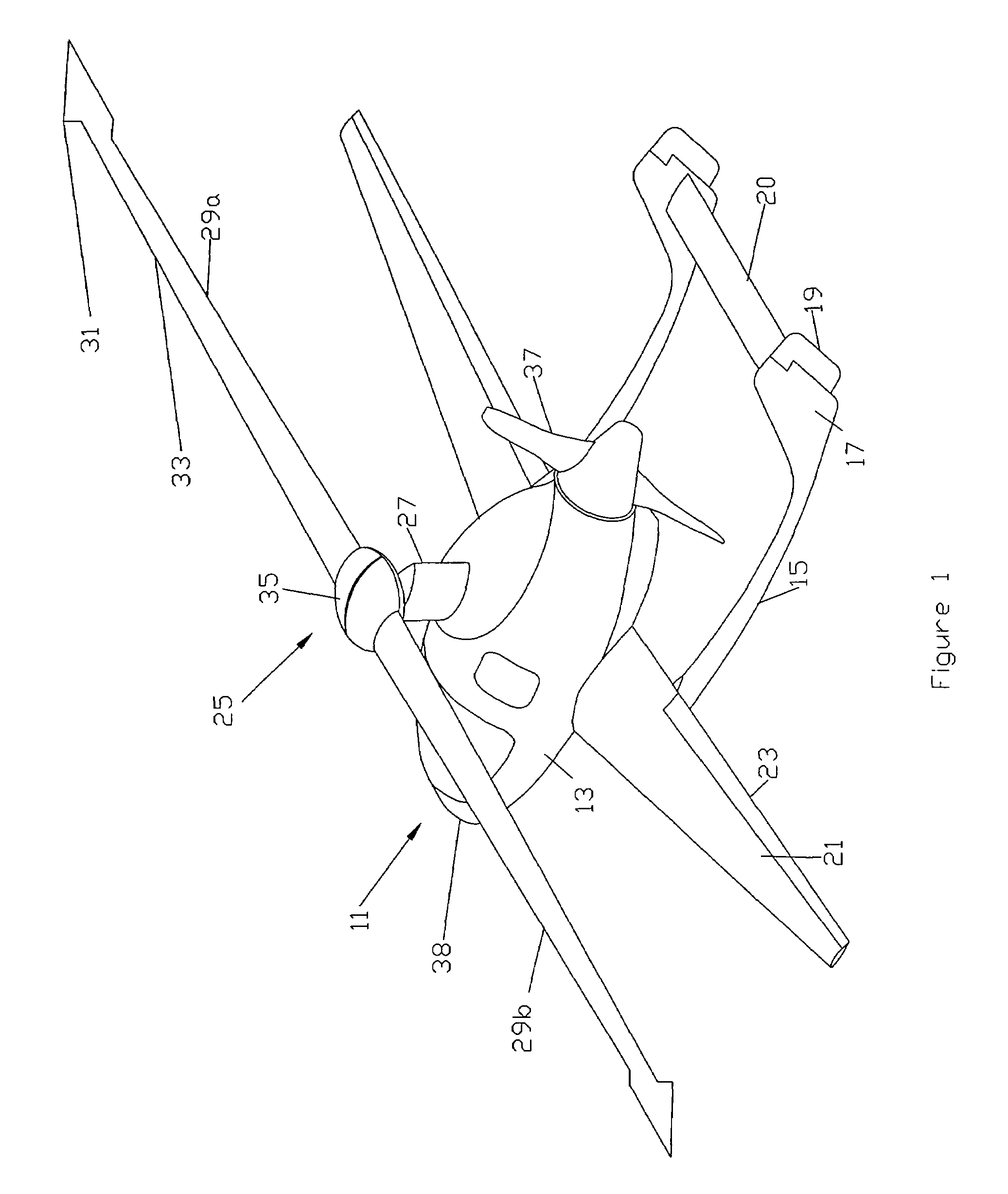Rotor collective pitch VS Mu to control flapping and mast/rotor tilt to control rotor RPM
a collective pitch and rotor technology, applied in the field of rotor aircraft, can solve the problems of reducing centrifugal force, difficult to measure flapping during flight, and advancing blades can only provide as much lift moment, and achieve the effect of minimal rotational speed
- Summary
- Abstract
- Description
- Claims
- Application Information
AI Technical Summary
Benefits of technology
Problems solved by technology
Method used
Image
Examples
Embodiment Construction
[0020]Referring to FIG. 1, aircraft 11 is a gyroplane having a fuselage 13 with tail booms 15 in this example. A vertical stabilizer 17 is located at the end of each tail boom 15. A rudder 19 is mounted to the aft end of each vertical stabilizer 17. A movable stabilator 20 extends between the aft ends of tail booms 15.
[0021]Fuselage 13 has a pair of wings 21 that provide lift during forward flight. Each wing 21 has an aileron 23 in this embodiment. A rotor 25 is mounted above fuselage 13 on a mast 27. Rotor 25 is shown with two blades 29, but it could have more than two. During each revolution, one blade 29a becomes the advancing blade while the other blade 29b becomes the retreating blade. Blades 29 have tip weights 31 at their tips for providing inertia during take-off and stiffness during slow rotation at cruise speeds. Preferably tip weights 31 are forward of the leading edge 33 of each blade 29. Blades 29 join each other at a hub 35 at the upper end of mast 27. Preferably hub 3...
PUM
 Login to View More
Login to View More Abstract
Description
Claims
Application Information
 Login to View More
Login to View More - R&D
- Intellectual Property
- Life Sciences
- Materials
- Tech Scout
- Unparalleled Data Quality
- Higher Quality Content
- 60% Fewer Hallucinations
Browse by: Latest US Patents, China's latest patents, Technical Efficacy Thesaurus, Application Domain, Technology Topic, Popular Technical Reports.
© 2025 PatSnap. All rights reserved.Legal|Privacy policy|Modern Slavery Act Transparency Statement|Sitemap|About US| Contact US: help@patsnap.com



